
William Allen, also known as Guilielmus Alanus or Gulielmus Alanus, was an English Cardinal of the Roman Catholic Church. He was an ordained priest, but was never a bishop. His main role was setting up colleges to train English missionary priests with the mission of returning secretly to England to keep Roman Catholicism alive there. Allen assisted in the planning of the Spanish Armada's attempted invasion of England in 1588. It failed badly, but if it had succeeded he would probably have been made Archbishop of Canterbury and Lord Chancellor. The Douai-Rheims Bible, a complete translation into English from Latin, was printed under Allen's orders. His activities were part of the Counter Reformation, but they led to an intense response in England and in Ireland. He advised and recommended Pope Pius V to pronounce Elizabeth I deposed. After the Pope declared her excommunicated and deposed, Elizabeth intensified the persecution of her Roman Catholic religious opponents.
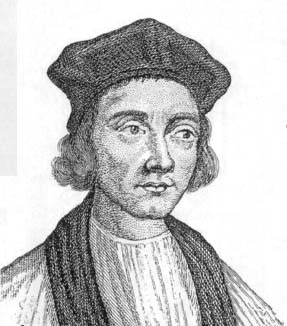
Cuthbert Tunstall was an English humanist, bishop, diplomat, administrator and royal adviser. He served as Bishop of Durham during the reigns of Henry VIII, Edward VI, Mary I and Elizabeth I.
Edward Osbaldeston was an English martyr, born about 1560. Не was hanged, drawn and quartered at York, 16 November 1594.

Henry Percy, 9th Earl of Northumberland, KG was an English nobleman. He was a grandee and one of the wealthiest peers of the court of Elizabeth I. Under James I, Northumberland was a long-term prisoner in the Tower of London, due to the suspicion that he was complicit in the Gunpowder Plot. He is known for the circles he moved in as well as for his own achievements. He acquired the sobriquet The Wizard Earl, from his scientific and alchemical experiments, his passion for cartography, and his large library.
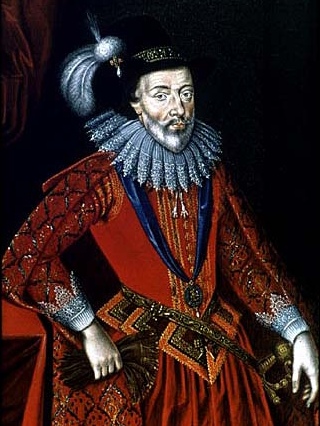
William Stanley, 6th Earl of Derby, KG was an English nobleman and politician. Stanley inherited a prominent social position that was both dangerous and unstable, as his mother was heir to Queen Elizabeth I under the Third Succession Act, a position inherited in 1596 by his deceased brother's oldest daughter, Anne, two years after William had inherited the Earldom from his brother. After a period of European travel in his youth, a long legal battle eventually consolidated his social position. Nevertheless, he was careful to remain circumspect in national politics, devoting himself to administration and cultural projects, including playwriting.

Edmund Arrowsmith, SJ was one of the Forty Martyrs of England and Wales of the Catholic Church. The main source of information on Arrowsmith is a contemporary account written by an eyewitness and published a short time after his death. This document, conforming to the ancient style of the "Acts of martyrs" includes the story of the execution of another 17th-century recusant martyr, Richard Herst.
Charles Neville, 6th Earl of Westmorland was an English nobleman and one of the leaders of the Rising of the North in 1569.
The Rising of the North of 1569, also called the Revolt of the Northern Earls or Northern Rebellion, was an unsuccessful attempt by Catholic nobles from Northern England to depose Queen Elizabeth I of England and replace her with Mary, Queen of Scots.
The Apostolic Vicariate of the Northern District was an ecclesiastical jurisdiction of the Roman Catholic Church in England and Wales. It was led by a vicar apostolic who was a titular bishop. The Apostolic Vicariate of the Northern District was created in 1688 and dissolved in 1850 and was replaced by the Diocese of Hexham, which changed to the Diocese of Hexham and Newcastle in 1861.
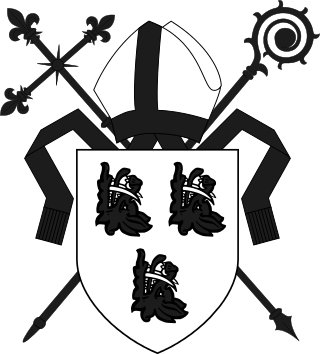
Lawrence Booth served as bishop of Durham and lord chancellor of England, before being appointed archbishop of York.
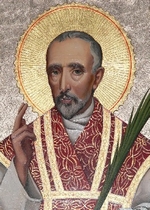
John Southworth was an English Catholic martyr. He is one of the Forty Martyrs of England and Wales.

Irish Catholic Martyrs were 24 Irish men and women who have been beatified or canonized for dying for their Catholic faith between 1537 and 1681 in Ireland. The canonisation of Oliver Plunkett in 1975 brought an awareness of the others who died for the Catholic faith in the 16th and 17th centuries. On 22 September 1992 Pope John Paul II proclaimed a representative group from Ireland as martyrs and beatified them.
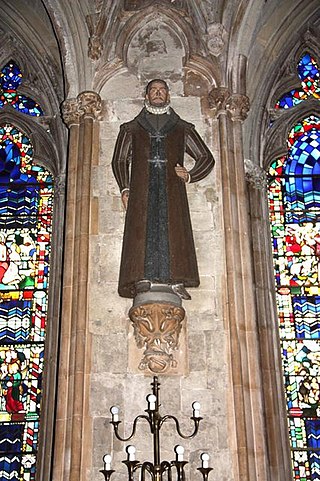
Swithun Wells was an English Roman Catholic martyr who was executed during the reign of Elizabeth I. Wells was a country gentleman and one time schoolmaster whose family sheltered hunted priests. He himself often arranged passage from one safehouse to another. His home in Gray's Inn Lane was known to welcome recusants.

James Pilkington (1520–1576), was the first Protestant Bishop of Durham from 1561 until his death in 1576. He founded Rivington Grammar School and was an Elizabethan author and orator.

Robert Gradwell was an English Catholic bishop, who served as rector of the English College in Rome. In 1828, he was appointed coadjutor to James Bramston, Vicar Apostolic of the London district.

The Diocese of Hexham and Newcastle is a Latin Church diocese of the Catholic Church, centred on St Mary's Cathedral in the city of Newcastle upon Tyne in England. The diocese is one of the six suffragan sees in the ecclesiastical Province of Liverpool and covers the historic boundaries of County Durham and Northumberland.
Roger Ashton was an English Roman Catholic soldier. He is a Catholic martyr.
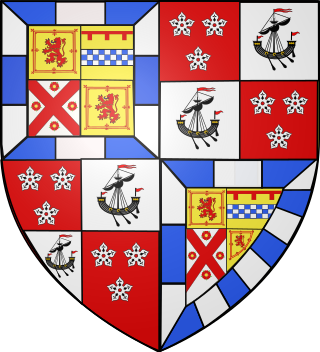
Captain James Stewart, Earl of Arran was created Earl of Arran by the young King James VI, who wrested the title from James Hamilton, 3rd Earl of Arran. He rose to become Lord Chancellor of Scotland and was eventually murdered in 1595.

St Cuthbert's Church is a Roman Catholic parish church in Durham, England. It was opened on 31 May 1827 to replace two previous chapels, one run by the secular clergy and the other by the Jesuits. It is also the home of the Durham University Catholic Chaplaincy and Catholic Society. From 2012 to 2016 the parish was entrusted, along with the chaplaincy, to the Dominican Order, and its congregation has since maintained the Dominicans' influence. The church is a protected building, being part of the Elvet Green Conservation Area. It is named for St Cuthbert of Lindisfarne, the 7th century bishop, healer and patron of Northern England.













